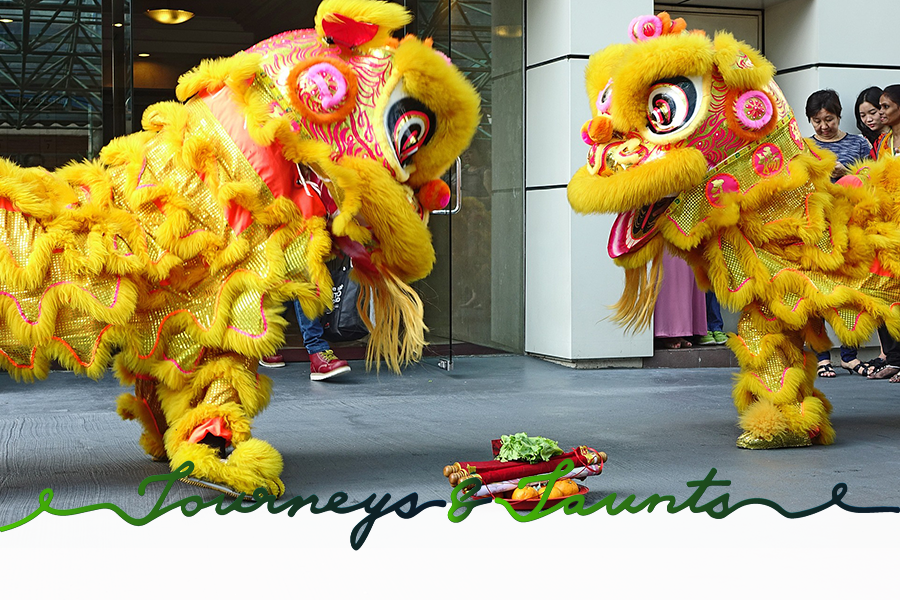During the last month, all our attention was on the Chinese Spring Festival – first we learned how the Chinese prepare for it: The Little New Year, Pork Stewing Day, Shopping Day, Couplets Day; and then, how they celebrate it: New Year’s Eve and the first day of the Lunar New Year.
In this article, let’s address the festival that ends the entire New Year period – the Lantern Festival, 元宵节or Yuánxiāojié in pinyin. This festival is held on the fifteenth day of the first lunar month (it is also the time of the first full moon in the lunar year). According to this year’s Gregorian calendar, this day falls on February 15th in 2022. Even though it is considered an important festival in Chinese tradition, there is no official holiday on that day. After the Lantern Festival, the New Year’s taboos are not though to be in effect anymore and all the decorations are taken down. Unlike some of the Christmas decorations, which somehow tend to linger all year round in many places in China.

Yuánxiāojié has a history of 2000 years, and, of course, is surrounded by many legends. Let’s have a look at the most popular one. The Jade Emperor in Heaven was so angry with some villagers for killing his favorite goose that he decided to burn the whole town. A good-hearted fairy heard this and told the villagers to light lanterns throughout town on the appointed day. They did it, so from the Heaven it looked like the town was on fire. Satisfied, the Emperor decided that his goose had already been avenged, and did not destroy the village. So, since that time, people celebrate the anniversary of their rescue by lighting lanterns of different shapes.
Chinese people in different regions have their own traditions to celebrate the Lantern Festival. But there are some customs which are observed pretty much everywhere in China.
The main attribute of Yuánxiāojié is, of course, lanterns. Traditional Chinese lanterns are oval-shaped, red and with red or golden tassels. Nowadays, lanterns can be made from different materials – wood or steel wires for frames, paper or silk for the shade, and Chinese calligraphy, painting or paper cutting for decorations. Lanterns were created as an improvement of the open fire, because not only do they protect the fire inside in windy weather, but they also provide a more diffuse form of lighting. You can see them everywhere in China (and even abroad) – in malls, parks, on the street etc. For Chinese people, to light a lantern means to pray for their future and the future of their families. In the evening (mostly) you may see sky lanterns. In ancient China, these kinds of lanterns were strategically used in wars, but nowadays they are popular, mostly among young people, during festivals such as Mid-Autumn Festival or Lantern Festival. Also, some people believe that a woman, if she wants to be pregnant, has to walk under a hanging lantern and pray for children – and her wish will definitely come true.
The other “activity” on that day including lanterns is guessing lantern riddles. This activity was very important and popular during the Song Dynasty, but the tradition has continued until this day. The rules are very simple: the owners of the lanterns have to write riddles on paper notes and paste them on the colorful lanterns. Other people have to solve the riddle – if they know the answer, they have to check it with the lantern’s owner and, if they have guessed correctly, the person could get a small prize.
In one of the previous articles on this blog, I mentioned different kinds of traditional dances during the Spring Festival. On Lantern Festival, it is common to see Lion Dances. Chinese people view the character of a lion as strong and brave, so it is believed that the lion protects people from all evil.

Another famous activity that is practiced on this day is Walking on Stilts. Performers do not just walk on stilts but also make breathtaking acrobatic moves. Actors wear different clothing to represent characters such as clowns, fishermen, monks, etc. and put on humorous shows according to their costumes.
The main dish for Lantern Festival is tāngyuán (汤圆), or yuanxiao (元宵) – glutinous rice balls in English. Because of their shape and pronunciation, they symbolize reunion and being together with family – and this is probably the reason why the Chinese like them so much. They are made of glutinous rice with various fillings inside – for example, sugar, rose petals, sesame, sweetened bean paste, or jujube paste – or without anything inside. During the night of the Festival, the whole family is sitting around the table and tastes this delicious dish to appreciate the full moon. My favorite fillings are black sesame (though your teeth look a ghastly gray after you eat them) and peanut. I could eat those tasty treats all year round!

Did you know that Lantern Festival day is something like Valentine’s Day in Western culture? Of course, because of Western influence on modern Chinese culture, they have and celebrate St. Valentine’s Day on February 14th but, traditionally, it was the fifteenth day of the first month according to the Lunar Calendar that was dedicated to (young) lovers. In the olden days, young people would walk around the streets during the festival to enjoy the beauty of the decorations and to meet new people and maybe even find love. There were special matchmakers who were especially busy during the festival in the hope of pairing couples.
Lion dances, skits on stilts, yummy food and finding love – Lantern Festival really has a lot of fun stuff going on, don’t you think?




